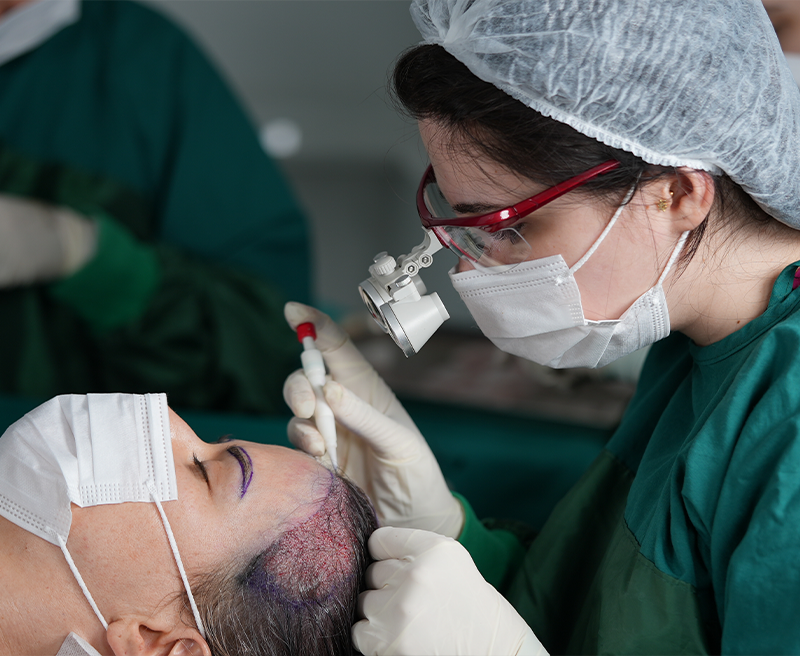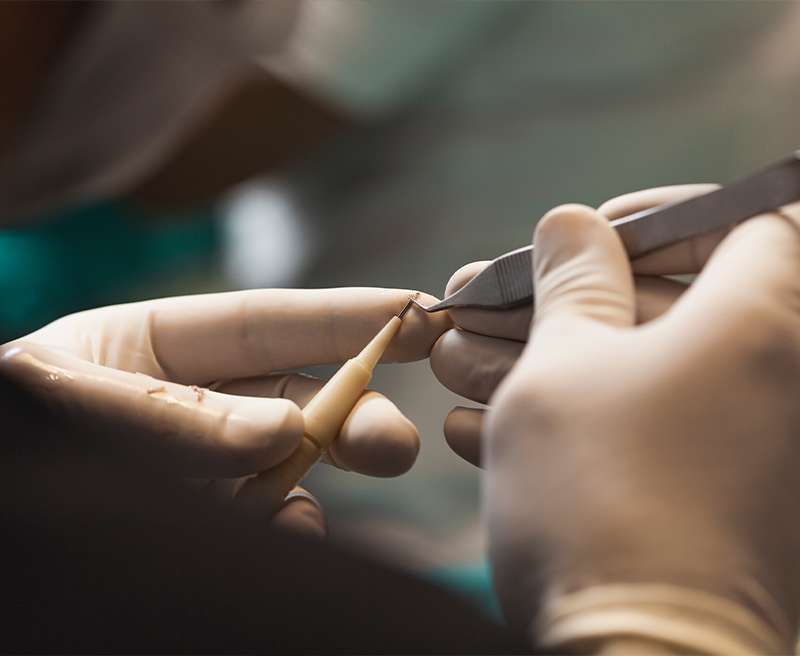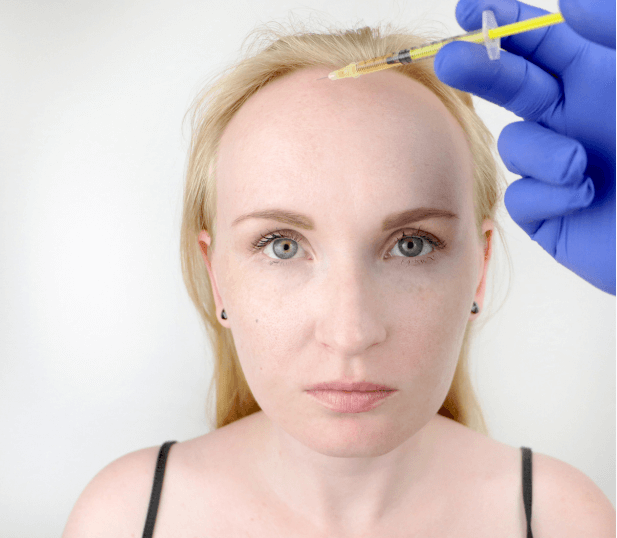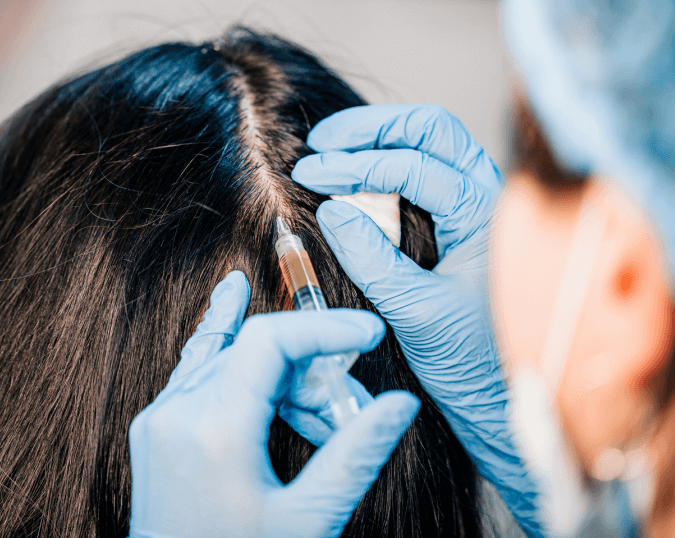HAIR TRANSPLANTATION IN WOMEN



How Does a Female Hair Transplant Process Work?
IWhile the core principles of hair transplantation remain the same for both men and women, the approach is often adjusted to suit the specific needs of female patients. Unlike men, women usually don’t need to shave their entire head for the procedure. Instead, only a small patch (window) of the donor area (usually at the back of the scalp) is shaved. This small area can be easily concealed with the surrounding hair, allowing women to continue their daily lives without any significant interruption.


1. Follicular Unit Extraction (FUE):
In the FUE technique, individual hair follicles are extracted from the donor area using a micro-punch tool. These follicles are then carefully implanted into the recipient area, one by one. The FUE method is minimally invasive, leaving no linear scars and ensuring a quicker recovery. It's ideal for women looking for a less noticeable procedure since only a small patch of the donor area is shaved.
2. Direct Hair Implantation (DHI):
DHI is a more advanced technique where hair follicles are extracted and immediately implanted into the scalp using a specialized tool called a Choi pen. This allows for more precise placement and a higher survival rate of transplanted hair. DHI does not require the creation of recipient sites beforehand, which can lead to a more natural-looking hairline and density.







Is African American Hair Suitable for Female Hair Transplant?
Main Differences Between Hair Loss in Men and Women
- Hormonal imbalances or disorders
- Vitamin deficiencies
- Iron deficiencies
- Blood value deficiencies
- Post-conception hormonal changes
Critical Considerations for Hair Transplantation in Women
If these tests reveal that hair loss is due to hormonal imbalances or deficiencies, hormone therapy should be initiated, and hair transplantation should be postponed until after the treatment is completed. Addressing the underlying cause first is crucial to achieving the desired results. Similarly, if a vitamin deficiency is identified, it should be corrected before proceeding with the transplant to ensure optimal outcomes.
Hair transplantation in women is a highly specialized field, requiring careful consideration of individual health factors to achieve the best possible results. By addressing the root causes of hair loss and choosing the right professionals (doctor, clinic) women can regain their confidence and enjoy a fuller, healthier head of hair.
- Homogram
- Ferritin
- B12
- TSH
- T3
- T4
- FSH
- FSH
- LH
- Progesterone
- Estradiol
- Prolactin
- Testosterone
- D3 Vitamin


How long does it take for a transplanted hair to grow?
Typically, noticeable results from a hair transplant begin to appear after 3-4 months. The full effects, including significant hair growth, are usually visible between 8-12 months. During this period, your hair can grow up to 15 centimeters. The rate of hair growth after a transplant largely depends on your individual hair growth cycle and how your body responds to the procedure.
HAIR TRANSPLANTATION IN WOMEN
How to Perform Hair Transplantation in WomenIt's fair to say that female pattern hair loss and a broad forehead are two issues that affect women of all ages and ethnic backgrounds. Many women experience accelerated hair loss due to factors such as certain hairstyles, excessive hair colouring, genetics, or nutrient deficiencies. This can have a big effect on their confidence and overall quality of life. Fortunately, hair transplantation offers an effective solution. If you’re considering treatment, our medical consultants will provide a personalized confidential consultation, guiding you through every step of the process. At LHC (Long Hair Centre), our team of experts is dedicated to providing advanced hair transplant solutions specifically designed for women. Our techniques and technologies of women hair transplants, create natural-looking results that blend with your hair, enhancing your appearance.
How Does a Female Hair Transplant Process Work? Hair loss in women can be a really tough experience, often affecting how we see ourselves and our confidence. The good news is that there are some amazing new hair transplant techniques like FUE (Follicular Unit Extraction) and DHI (Direct Hair Implantation) that can help. But how does the female hair transplant process work, and what makes it different from the procedure for men? Let's explore the details together. While the core principles of hair transplantation remain the same for both men and women, the approach is often adjusted to suit the specific needs of female patients. Unlike men, women usually don’t need to shave their entire head for the procedure. Instead, only a small patch (window) of the donor area (usually at the back of the scalp) is shaved. This small area can be easily concealed with the surrounding hair, allowing women to continue their daily lives without any significant interruption. You can see the two most common techniques below:
1. Follicular Unit Extraction (FUE): In the FUE technique, individual hair follicles are extracted from the donor area using a micro-punch tool. These follicles are then carefully implanted into the recipient area, one by one. The FUE method is minimally invasive, leaving no linear scars and ensuring a quicker recovery. It's ideal for women looking for a less noticeable procedure since only a small patch of the donor area is shaved.
2. Direct Hair Implantation (DHI): DHI is a more advanced technique where hair follicles are extracted and immediately implanted into the scalp using a specialized tool called a Choi pen. This allows for more precise placement and a higher survival rate of transplanted hair. DHI does not require the creation of recipient sites beforehand, which can lead to a more natural-looking hairline and density.
You can see the two most common techniques below:
1-Follicular Unit Extraction (FUE):
In the FUE technique, individual hair follicles are extracted from the donor area using a micro-punch tool. These follicles are then carefully implanted into the recipient area, one by one. The FUE method is minimally invasive, leaving no linear scars and ensuring a quicker recovery. It's ideal for women looking for a less noticeable procedure since only a small patch of the donor area is shaved.
African American women often experience unique hair loss challenges, particularly due to tight hairstyles like weaves, braids, and dreadlocks, which can lead to a condition called traction alopecia. This condition, caused by the constant pulling on the hair, results in a receding hairline and thinning hair. Additionally, the use of chemical hair relaxers can further weaken hair strands, contributing to hair loss. If you're considering a hair transplant, there are a few things you need to know. First, choose a surgeon who is experienced in working with afro-textured hair to achieve the best results. Second, evaluate the density and health of your donor area, which is typically located at the back of the head. Third, understand the root cause of your hair loss. This will help you develop an effective treatment plan.
Is African American Hair Suitable for Female Hair Transplant?
African American women often experience unique hair loss challenges, particularly due to tight hairstyles like weaves, braids, and dreadlocks, which can lead to a condition called traction alopecia. This condition, caused by the constant pulling on the hair, results in a receding hairline and thinning hair. Additionally, the use of chemical hair relaxers can further weaken hair strands, contributing to hair loss.
What to Consider Before a Transplant:
If you're considering a hair transplant, there are a few things you need to know. First, choose a surgeon who is experienced in working with afro-textured hair to achieve the best results. Second, evaluate the density and health of your donor area, which is typically located at the back of the head. Third, understand the root cause of your hair loss. This will help you develop an effective treatment plan.
Main Differences Between Hair Loss in Men and Women
Hair loss in men is mostly caused by genetic reasons, whereas in women, it can occur due to genetic factors or as a result of multiple causes, such as:
• Hormonal imbalances or disorders
• Vitamin deficiencies
• Iron deficiencies
• Blood value deficiencies
• Post-conception hormonal changes
Additionally, hair transplantation in women can be performed without shaving the scalp, unlike in men.
Critical Considerations for Hair Transplantation in Women
Women’s hair loss is frequently linked to hormonal and vitamin deficiencies. Therefore, it is essential to undergo thorough testing before considering a hair transplant. The following tests should be conducted:
If these tests reveal that hair loss is due to hormonal imbalances or deficiencies, hormone therapy should be initiated, and hair transplantation should be postponed until after the treatment is completed. Addressing the underlying cause first is crucial to achieving the desired results. Similarly, if a vitamin deficiency is identified, it should be corrected before proceeding with the transplant to ensure optimal outcomes.
Hair transplantation in women is a highly specialized field, requiring careful consideration of individual health factors to achieve the best possible results. By addressing the root causes of hair loss and choosing the right professionals (doctor, clinic) women can regain their confidence and enjoy a fuller, healthier head of hair.
How long does it take for a transplanted hair to grow?
The newly transplanted hair follicles generally take a week to settle. In some cases, your new hair might shed after 3-4 weeks and grow back in a month after that.
Typically, noticeable results from a hair transplant begin to appear after 3-4 months. The full effects, including significant hair growth, are usually visible between 8-12 months. During this period, your hair can grow up to 15 centimeters. The rate of hair growth after a transplant largely depends on your individual hair growth cycle and how your body responds to the procedure.
Main Differences Between Hair Loss in Men and Women
- Hormonal imbalances or disorders
- Vitamin deficiencies
- Iron deficiencies
- Blood value deficiencies
- Post-conception hormonal changes
Additionally, hair transplantation in women can be performed without shaving the scalp, unlike in men.


1-How is Hair Transplantation Performed in Women and What Should be Considered?
Hair transplantation in women is typically performed using the Direct Hair Implantation (DHI) method. This method is preferred when the hair is long, and the goal is to increase hair density without shaving the scalp
2-What are the Differences between Hair Transplantation in Men and Women?
The causes of hair loss in women differ from those in men. Therefore, the first step in hair transplantation is to identify the reason for hair loss. For example, if the cause of hair loss is a deficiency in the blood, the desired results may not be achieved through a hair transplant operation. Therefore, the individual's blood value must be examined before the operation.
3-Which Part of My Hair will be Shaved?
The area to be shaved during a hair transplantation procedure depends on the size of the transplant area and the number of grafts required. The size of the shaved area is determined by the number of hair follicles to be implanted in the area experiencing hair loss.
4-Is a female hair transplant painful?
Some women hesitate to get a hair transplant because they fear the procedure might be painful or overwhelming. If you've had similar concerns, there's good news—you don't need to worry about the pain. Both FUE and DHI methods are non-invasive, as they don't involve cuts or stitches. Local anesthesia is used during the procedure to ensure you remain comfortable, minimizing any discomfort you might feel during the transplant.
5-When can I go back to work?
You can usually resume work in 2-3 days, as a hair transplant is a relatively light surgery. However, if your job requires intense activity, you must rest for at least 2 weeks.



 Deutsch
Deutsch
 English
English
 français
français
 italiano
italiano
 Türkçe
Türkçe
 русский
русский
 한국어
한국어

